Electronic music genres: Dive into the World of music
Welcome to the vibrant and pulsating world of electronic music, a vast universe of sound that has evolved rapidly over the last few decades. Characterized by its innovative use of technology and synthesized sounds, electro music is an auditory adventure that transcends the usual boundaries of musical genre. From the groovy beats of house music to the atmospheric soundscapes of ambient, music is as diverse as it is engaging.
The roots of electro music can be traced back to the invention of the synthesizer and other electronic instruments in the mid-20th century. However, it was in the late 70s and early 80s, with the advent of affordable music technology, that music truly began to flourish. Today, it dominates the global music scene, influencing pop culture and creating a worldwide community of passionate fans. Whether you’re a long-time enthusiast or a curious newcomer, there’s always something new to discover in the world of electromusic.
When seeking PaperWriter help online, it’s essential to find a reputable and reliable platform. Look for services that offer experienced writers with expertise in various subjects. These professionals can guide you through the process of brainstorming ideas, conducting thorough research, organizing your thoughts, and ultimately producing a polished and engaging paper.
Genres of Electronic Music
In this guide, we will journey through the vast and diverse landscape of electronic music genres. This kaleidoscope of music, ranging from chill ambient soundscapes to heart-thumping drum and bass, is the result of decades of experimentation, innovation, and evolution. Each genre, with its distinctive features, rich history, and unique influences, contributes to the rich tapestry of electromusic. While it’s impossible to capture every sub-genre and stylistic blend, this guide aims to provide a broad understanding of the most influential and widely recognized styles of electromusic. This service domyessay.com write my essay on music without plagiarism.

House Music
As mentioned earlier, house music is often considered the cornerstone of electronic dance music (EDM). Born in the disco era, house music took the repetitive beat structure and infused it with elements of funk, soul, and electronic, creating a danceable, energetic genre that has stood the test of time.

Techno
Techno, a genre deeply rooted in industrial and minimalist sounds, is characterized by its mechanical rhythmic patterns and lack of melody. It’s the soundtrack of a dystopian future, channeling the pulse of machinery and the hum of urban life.
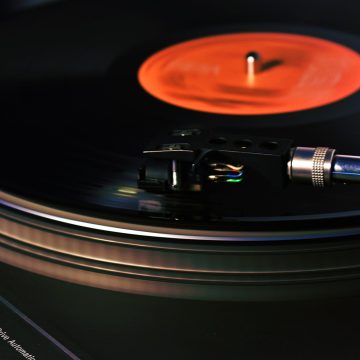
Trance
Trance music is the emotional heavyweight of electronic music genres. With its ethereal melodies, hypnotic rhythms, and an average tempo that often exceeds that of house and techno, trance music seeks to induce a state of trance (hence the name) in listeners, taking them on a euphoric musical journey.

Drum and Bass (DnB)
Known for its high-speed breakbeats and heavy basslines, drum and bass (or DnB) is an adrenaline-fueled genre that emerged from the UK’s rave scene in the 90s. The genre incorporates elements of many other music styles, including funk, jazz, hip-hop, and reggae.
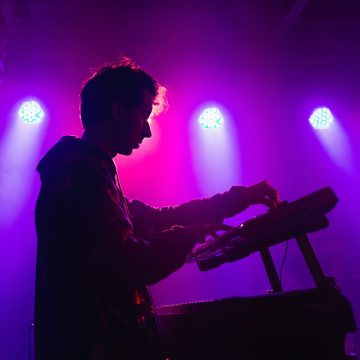
Ambient Music
At the other end of the spectrum, we have ambient music. Rather than focusing on beats or melody, ambient music is all about texture and atmosphere. It’s a genre that invites listeners to lose themselves in aural landscapes, creating a sense of tranquillity and space.
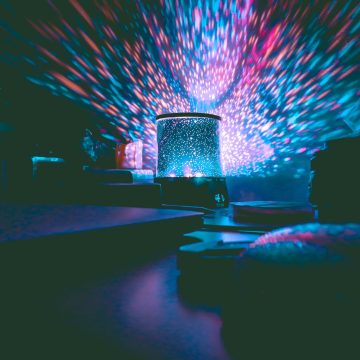
Dubstep
Emerging from London in the late ’90s, Dubstep is characterized by its overwhelming bass lines, reverberant drum patterns, and sparse rhythms. It combines elements of Jamaican dub music, drum and bass, and UK garage.
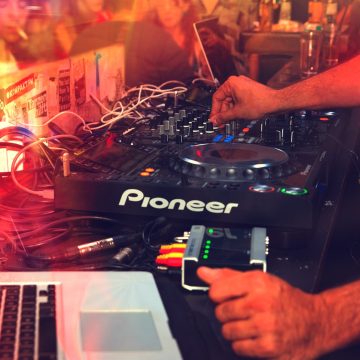
Electro
Electro (or electro-funk) is a genre that fuses elements of hip-hop and funk with electronic music. Known for its distinct “futuristic” sound, electro utilizes drum machines, vocoders, and synthesizers to create a robotic yet groovy musical experience.
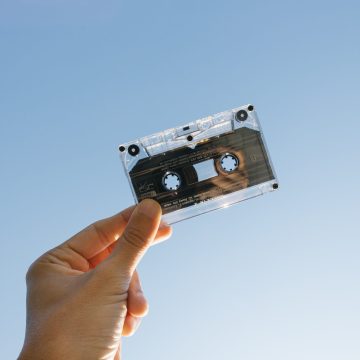
Trip-Hop
Born in the UK in the late ’80s and early ’90s, Trip-Hop is a downtempo electronic music that grew out of the Bristol underground scene. It combines elements of hip-hop, electronica, reggae, and R&B, and is known for its sedated beats and moody, atmospheric sound.
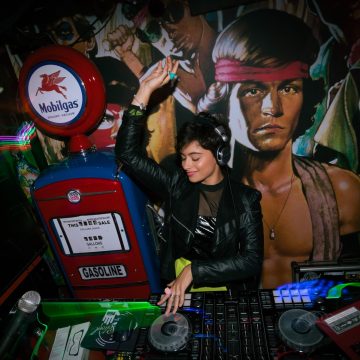
Synthpop
Synthpop, or synth-pop, is a subgenre of new wave music that became prominent in the late ’70s and features the synthesizer as the dominant musical instrument. It was prefigured in the ’60s and early ’70s by the use of synthesizers in progressive rock, electronic art rock, disco, and particularly the “Krautrock” of bands like Kraftwerk.
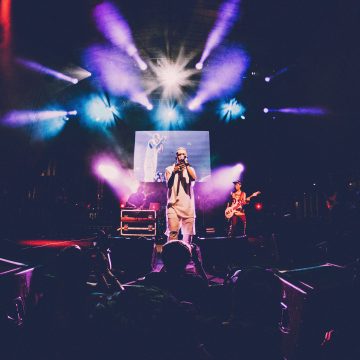
Hardstyle
Hardstyle is a genre of EDM characterized by its hard-hitting beats, intense basslines, and high tempo (usually around 150 BPM). It originated in the Netherlands in the early 2000s and quickly gained popularity worldwide.
House Music
Often heralded as the cornerstone of electronic dance music (EDM), house music owes its inception to the vibrant club scene in Chicago in the early 1980s. The genre is universally recognized by its distinctive 4/4 beat structure and repetitive rhythm patterns, characterized by kick drums on every beat. Its incorporation of soulful vocals and extensive use of synthesizers and other electronic instruments imparts a groovy, energetic sound that keeps dancefloors pulsating well into the night.
Famous for its empowering anthems and infectious rhythms, house music has bred numerous notable artists who have elevated the genre to global fame. The late Frankie Knuckles, dubbed the “Godfather of House,” is a key figure in house music history. His mixes, echoing from the speakers of the Warehouse club in Chicago, were instrumental in defining the house music sound, earning him a permanent spot in the annals of music. His seminal tracks, such as “Your Love” and “Baby Wants to Ride,” still influence artists and resonate with audiences today.
In the realm of modern house music, few acts are as prominent as Disclosure and Daft Punk. The UK duo Disclosure, comprised of brothers Guy and Howard Lawrence, became flag-bearers of a new wave of house music with their debut album “Settle.” Their fresh approach, blending house with UK garage, dubstep, and pop sensibilities, coupled with collaborations with artists like Sam Smith and Lorde, has brought house music to a broader audience.
Daft Punk, the enigmatic French duo, needs little introduction. With their futuristic helmets and pioneering sound, they have become synonymous with electromusic itself. While they traverse many genres, their roots in house music are undeniable. Albums like “Homework” and “Discovery” are considered house music classics, and tracks like “Around the World” and “One More Time” have defined the dance music era.
When it comes to house music festivals, there are few stages more iconic than those at the Amsterdam Dance Event (ADE) and Defected Croatia. The ADE, the world’s biggest club festival and business conference for electronic music, attracts hundreds of thousands of visitors each year. Over five days, it offers a program that covers all aspects of electronic music, with house music being a significant draw.
Defected Croatia, held annually at the Garden Resort in Tisno, is a six-day festival that is a paradise for house music fans. The festival, hosted by the iconic Defected Records, is known for its star-studded lineup featuring the best of house music, from legends to emerging talents.
As for venues, the Warehouse in Chicago is often considered the birthplace of house music. While it no longer exists, its legend lives on. On the other side of the Atlantic, the Ministry of Sound in London stands as a mecca for house music enthusiasts. Opened in 1991, it was one of the first clubs dedicated to the American house music scene. Its iconic sound system and commitment to the music it champions have made it an indispensable part of the global house music scene.
House music’s pulsating beats, soulful melodies, and deep grooves continue to attract new fans and inspire new artists. Its universal appeal, rich history, and the community it fosters make it not just a genre, but a global movement that keeps dancefloors moving, one beat at a time.
Techno
Techno, a genre synonymous with pulsating beats and futuristic sounds, stands as an audacious embodiment of the industrial age. Originating from Detroit in the late 1980s, the genre is often considered an amalgamation of various musical influences, including European electronic music, Chicago house, and electro-funk. Techno music is defined by its repetitive 4/4 beat structure, typically crafted by drum machines, a synthesizer-driven sound, and a tendency to favor the dark, non-melodic, and abstract.
In the pantheon of techno, a few names stand as pivotal figures, chief among them being the “Belleville Three” – Juan Atkins, Derrick May, and Kevin Saunderson. These Detroit-based maestros are credited with the birth and subsequent evolution of techno music. Juan Atkins, often hailed as the “Godfather of Techno,” incorporated elements of synth-pop and funk to craft a new sound. His work as Model 500, particularly tracks like “No UFO’s,” defined the blueprint of techno.
Derrick May, another member of the Belleville Three, furthered the genre with his high-energy, futurist approach. His track “Strings of Life,” released under the alias Rhythim Is Rhythim, is an iconic piece of music that transcended the underground scene and gained mainstream recognition. Kevin Saunderson, meanwhile, helped bring techno to a larger audience through more accessible, dancefloor-oriented tracks, particularly through his project Inner City.
In the contemporary techno scene, artists like Charlotte de Witte and Adam Beyer continue to push the boundaries of the genre. Belgium’s de Witte, known for her intense, stripped-down approach to techno, has quickly risen to the top tier of techno DJs. Tracks like “Closer” and “The Healer” showcase her ability to craft immersive, relentless soundscapes.
Sweden’s Adam Beyer, the founder of the Drumcode Records, is another leading figure in modern techno. Known for his driving, percussive sound, Beyer’s influence extends beyond his own music to the host of artists he’s championed through his label.
Techno’s spiritual home remains Detroit, and the annual Detroit Electronic Music Festival (now known as Movement) is a testament to the city’s indelible impact on the genre. The festival, held over Memorial Day weekend, attracts techno lovers from around the globe and features a lineup that mixes genre pioneers with emerging talents.
Halfway around the world, techno has found another home in Berlin, Germany, with the Berghain club standing as the genre’s undisputed temple. Known for its stringent entry policy, marathon sets, and impeccable sound system, Berghain represents techno in its purest form. The club’s austere, industrial aesthetic perfectly complements the music it champions, making it a must-visit destination for any techno enthusiast.
Techno, in its various mutations and forms, continues to thrive, driven by an ethos of innovation and a desire to explore the darker, more abstract corners of sound. It’s not just a genre—it’s a cultural movement, a form of expression, and an artistic outlet. From its humble beginnings in Detroit to its global domination, techno’s compelling rhythm continues to echo through the annals of music.
Trance
Trance music, aptly named for its ability to induce a trance-like state with its emotive melodies and high-energy tempo, emerged as a distinct genre in the early 1990s in Germany. This genre is defined by a tempo ranging from 125 to 150 beats per minute, repetitive yet evolving melodic phrases, and a musical form that builds up and down throughout a track, creating an ebb and flow of tension and release. With its layered melodies, soaring synth patterns, and pulsating rhythm, trance music creates an immersive, almost hypnotic, soundscape that resonates with listeners on an emotional level.
The world of trance music is home to several legendary artists who have helped shape and define the genre. Among these, Paul Van Dyk stands as one of the pioneers. The German DJ and producer, often cited as one of the earliest adopters of trance, has been a key figure in the genre’s evolution. His track “For An Angel” is considered a classic and helped catapult trance into mainstream consciousness.
Armin van Buuren, the Dutch DJ and producer, is another luminary of the genre. Known for his masterful ability to create epic soundscapes, van Buuren’s influence on trance music has been profound. His weekly radio show, “A State of Trance,” has become an institution in the electronic music world, reaching millions of listeners across the globe. With tracks like “Communication” and “In and Out of Love,” he has crafted some of the genre’s most iconic anthems.
UK-based trio Above & Beyond have also left an indelible mark on trance music. Their euphoric melodies, poignant lyrics, and seamless production have endeared them to a dedicated fanbase. Through their label, Anjunabeats, they’ve championed a host of artists and helped to evolve the genre’s sound.
When it comes to trance music festivals, Tomorrowland in Belgium and Transmission in the Czech Republic offer unparalleled experiences. Tomorrowland, one of the world’s largest and most notable music festivals, hosts a variety of music genres, with trance being a major draw. The festival is renowned for its elaborate stage designs and high-profile lineups.
Transmission, held annually in Prague, is a festival dedicated solely to trance music. Known for its spectacular laser shows and a lineup that features the genre’s biggest names, Transmission offers an immersive experience that resonates deeply with trance music lovers.
The island of Ibiza, with its sun-soaked beaches and vibrant nightlife, has long been a haven for electromusic. Its clubs, like Amnesia and Pacha, are renowned for hosting legendary trance parties. With world-class DJs spinning hypnotic tracks till dawn, these clubs offer an unrivaled experience for trance enthusiasts.
Trance music, with its ethereal melodies, pulsating rhythm, and high-energy tempo, transports listeners to a different realm. It’s more than just a genre—it’s an emotional journey, a shared euphoria, a transcendent experience that continues to captivate audiences worldwide.
Drum and Bass
Drum and Bass, often abbreviated as DnB, is a genre born out of the UK’s vibrant rave scene in the early 90s. It’s characterized by its fast tempo breakbeats, typically ranging from 160 to 180 beats per minute, and the emphasis on heavy bass and sub-bass lines. Its rapid breakbeats, coupled with intricate bass patterns, make for a frenetic and energetic sound that is instantly recognizable and uniquely exhilarating.
The genre has spawned several noteworthy artists who have shaped its evolution over the years. One of the pioneering figures is Goldie, a British musician and DJ whose innovation in the genre earned him the title of “the king of jungle.” His debut album, “Timeless,” has been hailed as a seminal drum and bass album, fusing elements of breakbeat, jungle, and electronic soundscapes.
Pendulum, an Australian drum and bass (and later, electronic rock) band, brought the genre into the mainstream with their distinctive sound that fused DnB with elements of rock and electronic music. Their track “Tarantula” remains an iconic piece in the drum and bass realm.
Sub Focus, aka Nick Douwma, is another influential figure in the drum and bass scene. His self-titled debut album showcases his ability to craft tracks that range from roaring, bass-driven anthems to more melodic and nuanced compositions, proving the versatility and wide-ranging potential of the genre.
The drum and bass scene is also renowned for its festival culture, offering high-energy experiences that bring together fans from across the world. Hospitality In The Park, hosted by the London-based Hospital Records, is a one-day festival that has become a staple in the drum and bass calendar. With multiple stages hosting a lineup of the genre’s best talents, it encapsulates the vibrant spirit of the DnB community.
Let It Roll, held in the Czech Republic, is the world’s biggest drum and bass festival. The multi-day festival offers a unique audio-visual experience that goes beyond music, featuring pyrotechnics, stage designs inspired by sci-fi aesthetics, and, of course, a lineup boasting the biggest names in the genre.
As for venues, Fabric in London is a must-visit spot for any drum and bass enthusiast. Known for its regular “FabricLive” events, the nightclub has been instrumental in promoting drum and bass and other underground music genres. Its dedicated DnB nights showcase the best of local and international talents, cementing its reputation as a key player in the genre’s vibrant scene.
Drum and bass, with its frenetic breakbeats, deep basslines, and restless energy, offers a sonic experience that is as thrilling as it is complex. Its fast-paced rhythm and evolving sub-genres continue to inspire a new generation of artists and fans, asserting its unique influence in the electro music landscape.
Ambient Music
Ambient music represents a distinct facet of electronic music that prioritizes atmosphere and mood over traditional rhythmic, melodic, or compositional structures. Emerging in the 70s, ambient music seeks to envelop the listener in a sonic environment that can evoke a wide range of emotions and sensations. The genre was heavily influenced by the pioneering work of Brian Eno, who defined it as music designed to induce calm, space, and a sense of being present in the moment.
Brian Eno, often recognized as the father of ambient music, has been a leading figure in its development. His seminal album, “Music for Airports,” released in 1978, was one of the first to be explicitly labeled as “ambient.” The album’s soundscapes, devoid of conventional song structure, were designed to be immersive, creating an atmosphere that could transform one’s perception of time and space.
Aphex Twin, or Richard D. James, is another influential artist in the world of ambient music. Although he has explored various electronic music genres, his contributions to ambient music have been particularly significant. His album “Selected Ambient Works 85-92” is widely regarded as a classic in the genre, offering a blend of soothing soundscapes, subtle beats, and haunting melodies that evoke a wide range of emotional responses.
Moby, an American musician and producer, has also made significant contributions to ambient music. His album “Ambient,” released in 1993, showcases his ability to create textured soundscapes that evoke a sense of tranquility and introspection. Tracks like “Myopia” and “J Breas” highlight the emotive potential of ambient music, demonstrating its capacity to transcend the boundaries of conventional song structure.
While ambient music is not typically associated with large-scale festivals or club scenes, there are certain events that cater specifically to this genre. One such event is the Big Ears Festival held annually in Knoxville, Tennessee, USA. The festival, which embraces a wide range of music genres and art forms, has become a haven for lovers of ambient music. With its innovative programming and dedication to showcasing avant-garde and experimental music, Big Ears offers a unique platform for the exploration and appreciation of ambient music.
Ambient music, with its emphasis on atmosphere and texture, offers a unique sonic experience that invites listeners to delve into the realm of introspection and mindfulness. Its lack of strict rhythmic or melodic structure allows for a freedom of expression that has attracted a wide array of artists and listeners, solidifying its place within the broader electronic music sphere. It serves as a reminder that electronic music can be as much about creating spaces for introspection and contemplation as it is about inducing dance and physical movement.